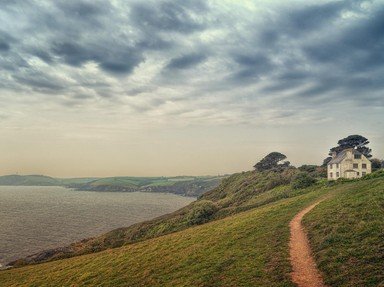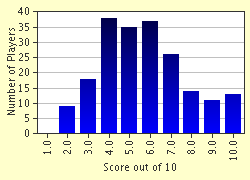Quiz Answer Key and Fun Facts
1. What famous early mediaeval text was found in Devon?
2. What is the name of the south-western area of Devon?
3. Where can you cross to an island on foot at low tide, but have to take a water taxi at high tide?
4. What is the name of the dangerous point in the Hamoaze, so named by sailors over hundreds of years?
5. Sir Arthur Conan Doyle practised medicine in Plymouth for a short time.
6. What word appears over the door of St. Andrew's Church, and was first put up the morning after it was seriously damaged in the blitz?
7. What great favour did Drake do for Plymouth in particular?
8. Sir Joshua Reynolds was born in Plympton.
9. Plymouth was once known as the Three Towns.
10. Pennycomequick in Plymouth is so called because one old penny was the fare on a ferry that plied nearby.
Source: Author
Saranna
This quiz was reviewed by FunTrivia editor
minch before going online.
Any errors found in FunTrivia content are routinely corrected through our feedback system.

